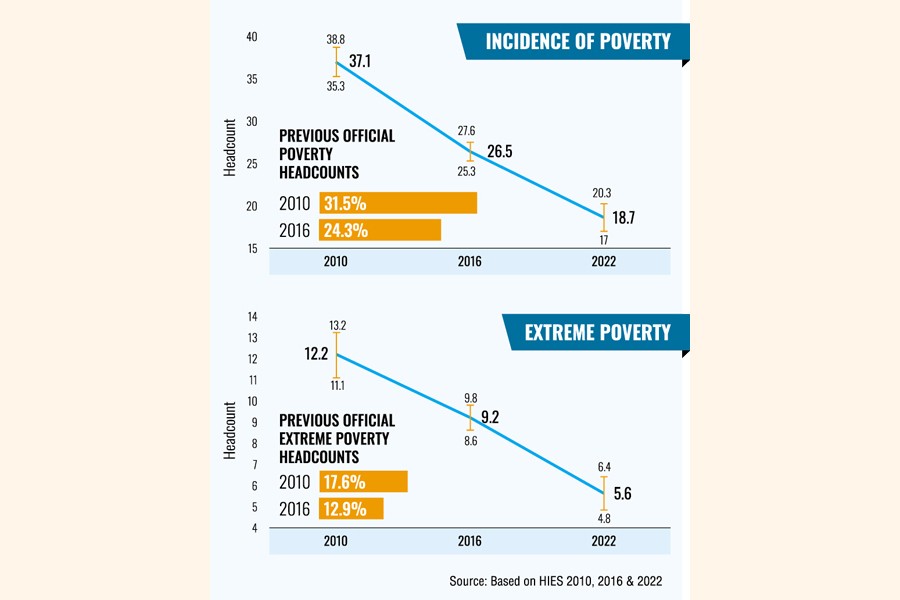
Mismatches in poverty, inequality data
Reveals WB study
FE REPORT | Thursday, 6 June 2024

A World Bank study finds mismatches in Bangladesh poverty and inequality data and shows how to measure the two vital indices and thus help effective policy actions.
Poverty rates would have been 10.6-percentage-point lower between 2010 and 2016 and a further 7.8-percentage-point lower between 2016 and 2022 if data of HIES 2022 apply to previous survey, says the study report.
Similarly, extreme poverty rates, according to the study, would have declined by approximately 3.0 percentage points in the earlier period and 3.6 percentage points more recently.
These reductions align with improvements in other wellbeing indicators, such as reductions in infant mortality and stunting, and increases in access to electricity, sanitary toilets, and literacy rates, says Sergio Olivieri, Senior Economist, Poverty and Equity Global Practice, at the World Bank.
Bangladesh Institute of Development Studies (BIDS) organised a seminar Wednesday to discuss and disseminate findings of the study, titled 'Comparing Apples to Apples: Rebuilding 2010-2022 Poverty and Inequality Trends in Bangladesh via Statistical Matching', by Jaime Fernandez, Sergio Olivieri and Ayago Wambile of the World Bank Group
The study deals with the challenges posed by the enhanced 2022 Household Income and Expenditure Survey (HIES) while ensuring comparability with previous rounds.
Providing new insights into the poverty and inequality trends in Bangladesh and offering a refined analysis of socioeconomic conditions from 2010 to 2022, the study highlights the importance of comparable consumption aggregates in analyzing poverty and extreme poverty over time.
The study has found average poverty lines for 2022 some 21-percent and 19-percent higher than the original 2010 and 2016 lines at 2022 prices.
In contrast, it reveals that extreme poverty lines showed a smaller increase of 6.0 per cent in both periods.
The study report says the poverty rate in 2016 would have been 1.7-to 2.3- percentage-point higher, and the extreme poverty rate 3.5-to 3.7-percentage-point lower.
"Similarly, the incidence of poverty in 2010 would have been 5.5-to 5.8- percentage-point higher, and the extreme poverty incidence would have been 5.1- to- 5.4-percentage-point lower."
The 2022 HIES introduced significant improvements in fieldwork, data management, and information quality, but these enhancements created comparability issues with earlier surveys.
To bridge this gap, researchers employed a two-step statistical matching process, utilizing the comprehensive 2022 data to reconstruct comparable consumption measures from previous surveys.
This innovative methodology allows for consistent assessments of poverty and inequality over time, providing valuable insights for policymakers, researchers, and stakeholders.
Sergio Olivieri said this refined approach provides a more accurate depiction of poverty trends, which is essential for effective policymaking.
Despite introducing a new understanding of these trends, the methodology maintains consistency with the official aggregate poverty profiles, ensuring compatibility with existing studies and recommendations.
"This study marks a significant advancement in understanding poverty and inequality trends in Bangladesh," he told the meet.
Economic Adviser to Prime Minister Dr Mashiur Rahman and BIDS DG Binayak Sen also spoke at the event.
bdsmile@gmail.com